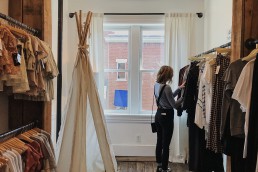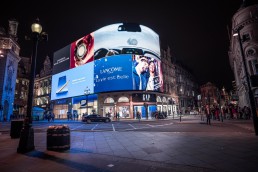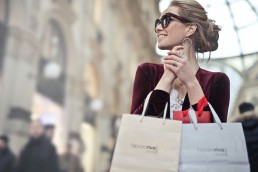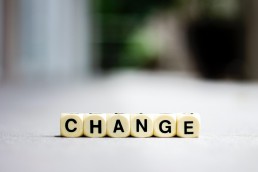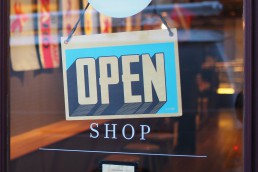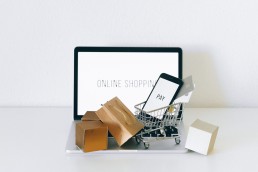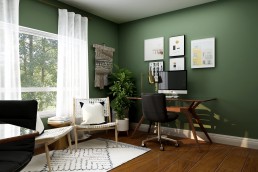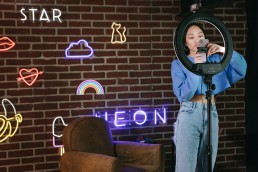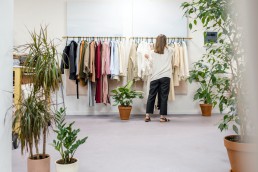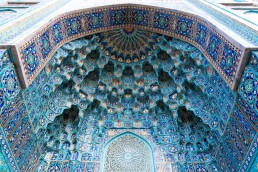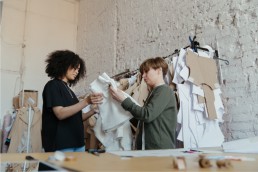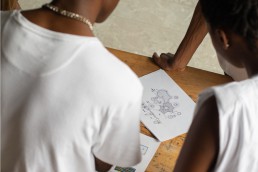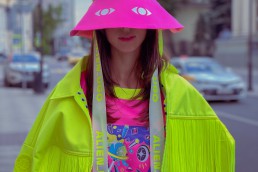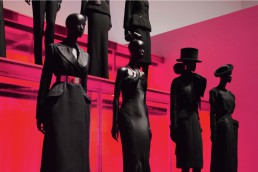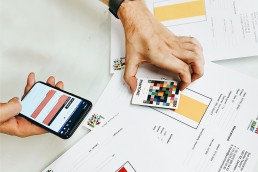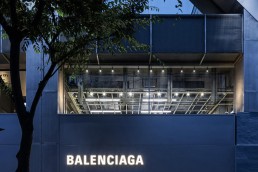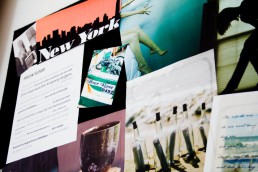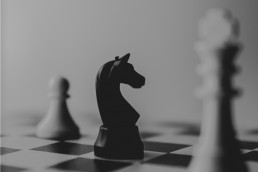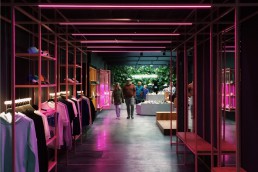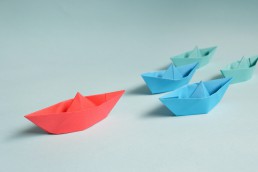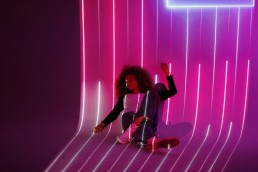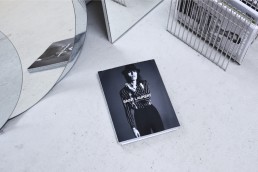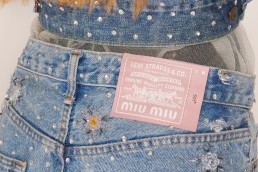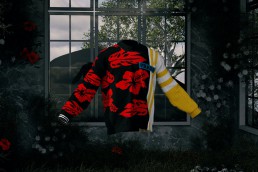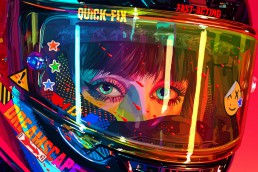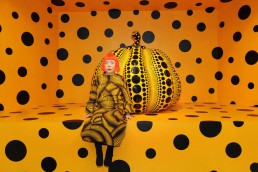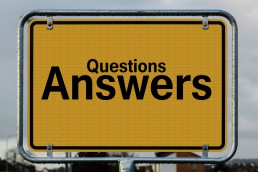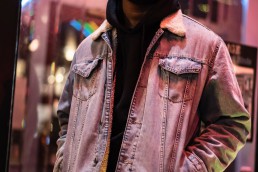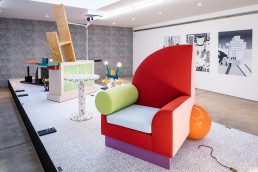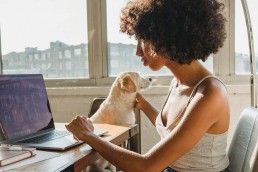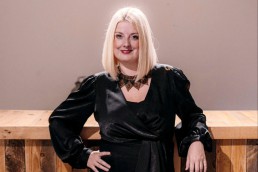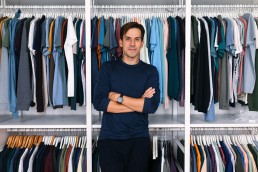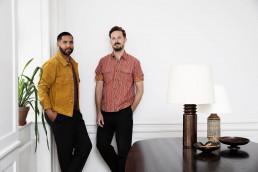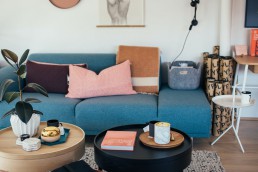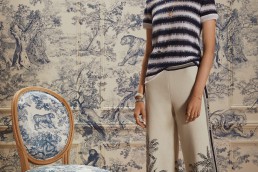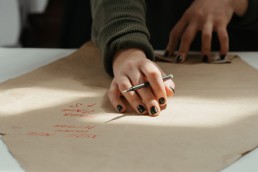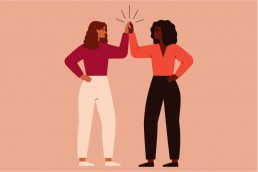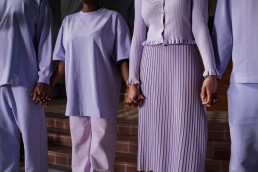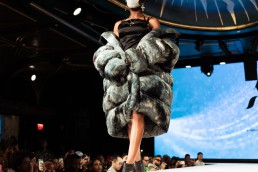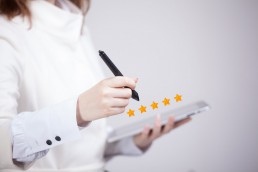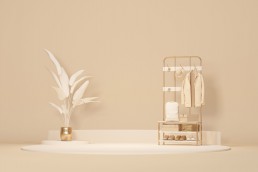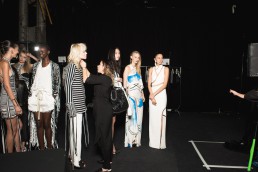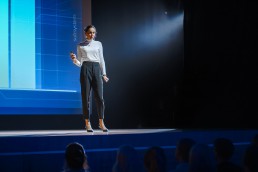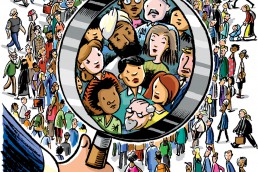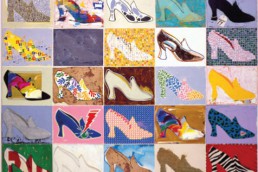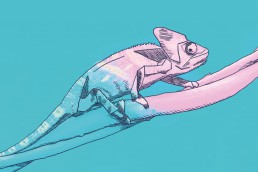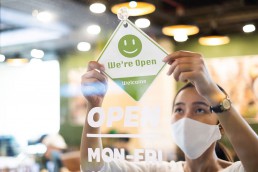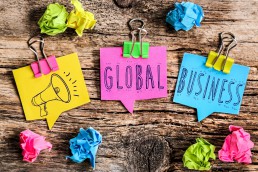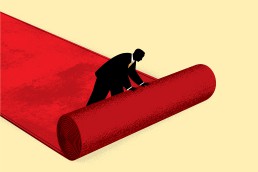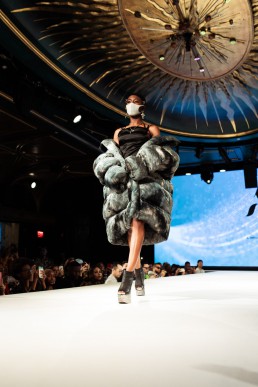Sustainability, A Conversation with Rossella Ravagli, Corporate Social Responsibility International Expert
An insight conversation with sustainability expert, Rossella Ravagli, about her career in Luxury, commitments and real changes inside the Fashion Industry and ways to build a better future.
Sustainability advocate, passionate and driven by purpose could very well define the character and personality of Rossella Ravagli. She is an executive trailblazer and change maker working in the field 24 years ago.
After earning a degree in Statistical and Economic Sciences from the University of Bologna and a master’s degree in quality, she started her career in consulting services. In 1996 she became CSR manager for different types of companies and sectors, auditing, training and dealing with certifications at worldwide level business.
From 2008 to 2020 she was “Head of Corporate Sustainability and Responsibility” at fashion luxury brand Gucci, owned by Kering Group, where she created the CSR department, defined, developed and implemented the sustainability strategy and all the projects and targets related.
She led the company to achieve internationally recognized leadership on sustainability, besides increasing the culture and raising awareness around the topic globally. Builder of relationships with key global stakeholders and Chair of Sustainability Committees, she’s been a member of the Board since 2009.
She was co-author of The Evolution of CSR in Gucci: From Risk Management to Stakeholder Engagement, almost a decade ago. Their views remain current and necessary to build the future for a more ethical fashion.
Interviewer: Is sustainability now a hot topic or is it a fad?
Rossella Ravagli: It is an urgent topic, in fact. Fashion, fortunately, is becoming more and more careful about its impact worldwide, the businesses are changing, and there is a lot of movement around the fashion system right now. Sustainability needs to be included in the agenda of all companies; it is not a fad.
But you are raising an important topic, we need to be very careful to avoid “greenwashing”. Meaning, to talk a lot, and to have very poor projects in place or even the wrong ones.
Sometimes I hear that a company says, “Oh, we are sustainable” but then, if we fact check them, they only just have a single piece of sustainable sourced product in their collection. That is not enough. Or when a company decides to donate a lot of money as a philanthropy activity, it is good, but it is not enough.
To be sustainable, in fact, all businesses need to have a strategy in place, and that means having a vision, a roadmap of activities for the short, for the medium and for the long terms. These integrated business strategies need to be analysed and approved on a top management level, because it is the only way to start a real change inside of the company.
I: Then, would you say some practices and business models are part of the problem?
RR: A change of culture is a must. That is a fundamental point to approach sustainability, because it is something that needs to be managed in a holistic way, in a 360 degrees way, not only related to external communication, but also H.R. related and so on.
In the end, people are at the center of the strategy. It is crucial to create a culture where people are on board, all the people inside of the company.
Production is a strategic part of the value chain, with sourcing raw materials and producing the goods that will be sold in stores, so the retail department has to be involved, sales assistants, managers too. It is a difficult road, but it is easier now than 10 years ago.
Now we are addressing key topics such as waste, strictly connected to the business model of fashion, we need to think on the optimisation of the collections to avoid it, and to create a more effective production, processing less waste or to figure out how to reuse it.
“When you buy a product that is respecting the environment and respecting people you are buying values”
I: To achieve optimisation, we must start with design then, as a key tool, is that accurate?
RR: Absolutely, creative departments need to have a designer that starts to think with the criteria of the ecodesign, testing new materials, and imagining all different possibilities.
Creativity needs to be absolutely open, because you cannot put a barrier on it, but it is fundamental to share with the creative department that there are some materials that, in terms of impact or social and environmental perspective, are better than others. Cotton, for example, we need to be careful with the source of it, because from Uzbekistan or India might mean child’s labor. Besides, considering its incredible use of pesticide, water and land use that requires.
It is fundamental to train people inside of the company, create a culture in the whole supply chain, that is why you must engage with your suppliers. From a design perspective we must figure out how to deal with overstock, and warehouses full of products that cannot be burnt and must not end in a landfill.
“Now there is a mantra. Less is more”
I: Circular or a more ethical fashion can change (or is changing) the structures of the fashion system as it is right now. What are the key issues?
RR: As I said, it has to be with a real change of culture. I think the pandemic was a sort of an accelerator, in all levels, for raising attention to unsolved issues. Now, these fashion or consumerism problems are under the light of many people, we must think about new business models.
Circular economy is an incredible approach to fight overproduction. The second hand market, for example, is part of the solution, but it was not something very common some years ago, especially in the luxury sector, but now we are seeing some progress.
On the other hand, the key issues are in terms of transparency and traceability, meaning seeing very well where your clothes are made and where your materials come from as an effort to a more ethical way of producing.
In this new approach of a business model, customers also have a responsibility about their consumption, they need to be more aware about the value of the product and the work conditions that made it possible.
“It is a responsibility for all, the future luxury customers and future generations”
I: As a global effort, where does it need to start? Governments, citizens, fashion holdings, or stakeholders?
RR: I believe in a multistakeholder approach. The government needs to have a responsibility, as policy policymaker, it is fundamental for the creation of new laws for new types of monitoring and controlling the investments.
Corporate business, especially the big fashion conglomerates, have an incredible role in terms of changing the business models. They can have a big impact because they work as a system and work with many suppliers around the world engaging with a lot of people directly and indirectly; they have influence.
They can offer new experiences in terms of e-commerce, for example. But the ultimate responsibility is also to offer customers a sense of purpose when they shop. Fortunately, many companies are starting to speak inside the need of a new culture, a culture based on values, to be a purpose driven company.
“The sustainability lead inside the company needs to be an orchestra director”
I: How did you start in this field as a sustainability advocate?
RR: I started 24 years ago around quality, certification bodies, but since the beginning I met social responsibility. However, to be honest in 1997 the definition of CSR (Corporate Social Responsibility) was not in place because the definitions may vary, even until today, all of them related with Sustainable Development.
It was all very informal inside companies at international level. I remember when a CEO of the company told me that was some new topic that we would like to assign you because we think that you are the best person to develop everything. The fact was, everything was new for everybody.
I spent a lot of time researching, reading many books and traveling a lot. It was an incredible experience, I had the occasion to visit some factories in China, Pakistan, Brazil and in Africa, I had an incredible experience in the agricultural sector in Kenya. I saw some critical situations in terms of violation of human rights and worker rights environments. So, I gained this experience and every year I told myself: No, this cannot continue, they [the company] need to absolutely embrace this challenge.
Then I prepared many tools and many courses to raise the awareness needed, to imply to the CEO and the Board that it was a good strategic topic to reinforce. Building a strong reputation means to be able to manage everything, the bright side, the difficulties and, obviously, the expected criticism.
“In terms of sustainability, to be honest, I always try to work to make a difference”
I: Do you think fashion’s inside corporate culture has changed since you started? How?
RR: In my experience, yes. I come from a company where I started to believe everything is possible. When I joined Gucci at the end of 2008, and I was alone, I managed to build everything. I started using the training leverage again, because it was a challenge to create a Social Responsibility culture for a fashion company where, the primary mission in theory, is profit.
The first year I trained 700 people inside the brand from managers, employees and production teams to understand why this is necessary and what are the implications of their management decisions, such as, opening a store, to be thinking of the suppliers, the sourced materials, the workers conditions abroad, for example. It is a step-by-step.
In the beginning it was very difficult to work with the Creative Department, the quality of sustainable materials back in the day was not very good. But now, the effect inside the design teams is incredible, they are engaged, they have a list of material that they can use, or not to use and which ones are better to use.
As an example, when we started the process of auditing the supply chain, at the beginning, the supplier was scared with the process. And then after a short time, they said: “Why do you not visit me this year? I want you to come and see us!” They understood that, in the end, it is an added value.
The holistic project it is called (Gucci) Equilibrium, it is a balance, you cannot do everything right away, right? But you have to start and, I can tell you, it is possible to change.
“People define me as a pioneer, but I am passionate for sure about it, because it felt right inside me. Now I am very happy to realise that, yes it was all true, because this [sustainability] is the way”
I: Gucci, as a brand, has been very active engaging in social issues lately.
RR: Yes, no doubt, the refugees or the diversity and inclusion programs, are something on which I am very proud of because these last years, fortunately, inside of the company conversations about these fundamental issues started, which is not always easy to implement; mainly due to stereotypes related to women, LGBT community, people with disabilities, racial issues. In this sense, to train people is the only way, because, even if you have an open culture, you can discriminate even if you do not intend to.
Inclusion inside the company is a value. Sometimes it all starts, unfortunately, from some concerns and discrimination, but it was a sort of call to action to the company. They have now in place a committee or a person in charge to manage diversity and inclusion.
I: Very unusually forward for a fashion brand…
RR: Personally, in the last year, I suggested taking part in migration issues, to integrate some refugees in the company. It was an incredible project, we organized a “Human Library”, a space where refugees could share and tell their experience. I remember I received a lot of emails from my colleagues saying good things about this action, people cried at the end of some speeches, it was a really emotional involvement, it was an incredible moment.
The project finished with the incorporation inside of the company of ten or thirteen refugees. It was remarkable because it opened the door, we needed to demonstrate that it is possible.
“Regeneration; I think that the new word after sustainability is regeneration”
I: What are your next professional steps? How do you see the future of CSR?
RR: To embrace new challenges, a new professional life. I love activities where I permit myself to transmit knowledge, I always tried to maintain a strong connection with academics, mentoring as many students as I can. Also, I am in contact with many startups because I believe that the change of business mindset has to be through innovation.
As for the future of CSR, from one side, the awareness of these topics has increased a lot in fashion companies, they now have a strong commitment and good implementation of their strategy. But, on the other side, the definitive way to create a significant impact and guarantee a social justice for everybody, around the world, is still a long journey.
Fernando Aguileta de la Garza
Key Insights to Understand Customer Behaviour of the Now
The client-centric perspective is here to stay, understanding the customer is mandatory. Today we share key aspects in the new purchase behaviour for you to build your brand strategy.
People are not (only) consumers, and finally marketing practices are becoming transversal, treating clients as what they have always been, people. “The customer is not a moron. She is your wife”, David Ogilvy stated back in the fifties. To update that coined phrase, I would say it, now – the customer- is all of us, all around you, no matter country, gender, social status, age, or background.
Customers are always evolving from segmentation boxes into a hybrid typification where lifestyle and attitudes are more important to define (and search for) a loyal clientele. Due to the pandemic, several social habits have changed forever and new ways to communicate (and shop) have emerged.
Globalisation, online shopping, internet culture, and the complex changes in the markets are exposing the continuing fragmentation of customers within all areas into small niche groups which want and demand a wide range of products or services.
Fashion and lifestyle industries are overseeing this fracture, as not only the younger generation is targeted for marketing plans or brand activations. There is a richer perspective in distinct fashion segments, as they behave differently no matter if their social and demographic constitution is the same.
Understanding the Customer Behaviour: Practical Tools to Frame It
Traditionally, one of the main structures to build a market segmentation for users in fashion business has been a combining analysis of age, gender, family size, income, race, religion, education or occupation.
However, covering the purchasing behaviour has always been important as, in fashion categories and product offering, as the user occasion of wearing that product, the benefits -practical or emotional- wanted, the loyalty level form the client to the brand, as well as, the readiness to purchase are all clues for the brand.
In that order, it is important to consider all stages of the AIDA model (Awareness, Interest, Desire, Action), knowing that each one of them would be different if we target several groups in our business.
The psychographic segmentation is a perfect approach if you mean to study your customer deeply, as lifestyles, social attitudes, and spending habits are crucial in this framework of analysis, besides digging in personality types to understand what they really want or will want, even if they do not know it.
The VALs system or Taylor-Nelsen lifestyle segmentation can help any marketer or entrepreneur to understand consumer approaches and internal motivations to a certain category and main attitudes towards income, spending, and life goals.
We can analyse our targeted consumer through the main three categories, the principle-oriented, status-oriented, and action-oriented customer. Inside the categories we can sub-divide them into Achievers, Experiencers, Makers or Fullfilleds, to name a few, exploring aspects as financial resources and how they spend it, social causes and environmentally aware, conservative spenders or constantly desiring experiences.
Customer Experience and Framing Our Ideal Client (Not Just Targeted Numbers)
To profile our ideal client, it is important to know what she/he wants, their main needs, and inner perspective for the brands’ offering. It is helpful, inside creative or marketing teams, to create a character, a fully realized client to frame all the brand’s strategy.
“Buyer persona”, “Customer avatar”, “Pen portrait”, all mean the same thing. I would rather call it “Client Stories” -even before our world was invaded by stories in social media-, because I find it more human, as everybody, has a personal and particular story.
Their use is rooted in treating the client as a person and not just a single demographic. It had different kinds of versions in marketing literature in the past. All tools, or I might say, aspirational/realistic analysis of possible clients want to map the inner world, in order to try to predict certain outcomes regarding the purchase or the satisfaction.
In this perspective, applying inside your business certain Design Thinking practices such as an Empathy Map is worth it, not only for product development, but also to imagine the emotional impact of your brand’s decisions in your clientele to push forward into offering the best experience you can give.
The customer experience (CX) is a multidimensional construct focusing on a customer’s cognitive, emotional, behavioral, sensorial, and social responses to a firm’s offerings during the customer’s entire purchase journey, according to marketing researchers, Lemon and Verhoef in their article “Understanding Customer Experience Throughout the Customer Journey”.
To provide the best customer experience we must know what is happening in the market, what society behaviour is taking place and changing to get into the action. Having a deep understanding of our client story and to know what it cares about the world, is the best way to trace a strong strategy.
Emerging Customer Behaviour Trends and Useful Data to Understand The Year Ahead
Worldpay’s 2020 US Consumer Behavior Report states some key aspects to be aware of for displaying payments and customer interactions regarding what is important to them in terms of money.
For example, they found “85% of Gen Z respondents follow brands on social media, with nearly half making purchases via social media platforms. Among those Gen Z respondents who have made purchases via social media, more than a third (34%) do so every day”.
However, people who were unlikely to make a purchase via social media or social shopping “51% said they don’t trust social media sites for secure purchases, while 46% would rather shop on retailer sites and apps directly”.
In the same report, more than 50% of the consumers use a mobile wallet, because it is faster, safer and it is convenient; they believe that in five years, smartphones will replace credit/debit cards as their primary payment method.
According to Deloitte’s 2021 Global Marketing Trends study, the consumer sentiment toward digital technologies due to Covid-19 is expected to grow more than prior to the outbreak. 66% of respondents affirm they appreciate more well-designed technology. In this sense, brands and executives state that digital technology in sales and marketing are their priority; to fulfill a channel strategy that works across the customer journey.
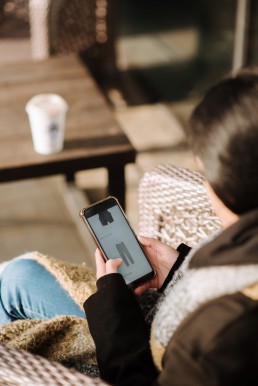
56% of people engaged in at least one digital activity over the course of the past year.- Deloitte’s 2021 Global Marketing Trends study
Deloitte identified some activities/habits done for the first-time during pandemic and people were really satisfied with them. All of key points ranked above 50%, as a superior positive alternative – to in real life (IRL)-; People had tried video-chats /calls, has tried an educational app, attended to an online workshop, watched a movie with friends located elsewhere, ordered food and tried exercise apps, purchased groceries to home or ordered delivery from a restaurant, besides being evaluated or treated through telemedicine.
Forbes Magazine and a panel of experts in their business council discussed customer behaviour topics that were -and continue to be- important to clients, such as value-based spending (client identifying with brand values) and more socially conscious shopping (shopping local and considering the political, social and ethical ramifications of supporting businesses).
Also, the rise of green products; an increment on DIY culture; a demand for more anonymity (protection of sensitive data, navigation data) and a greater “human” element in their virtual interactions (due the zoom-fatigue or full digital platforms).
People’s behaviour will always be changing. In this customer centric business culture it is really essential, as a strategist, to be open and flexible in consumer demands, how they feel, and as a brand, how we can make their life better.
Fernando Aguileta de la Garza
Interior Design Video Consultations with Top Designers and Architects: Meet The Expert
Interior designer Jake Arnold and a team of IT professionals have launched The Expert, an innovative platform for one-on-one connections with renown designers, offering guidance on projects and decoration advice.
The year of “zoom calls” and webinars taught us the advantages of connecting with other people in remote mode, working long distance and now, we are all very used to the video-call protocol. For some people, that change of habits meant an incredible business opportunity.
Young celebrity interior designer, Jake Arnold (who has designed homes for Dan Levy, Chrissy Teigen, Rashida Jones) and tech entrepreneur, Leo Seigal, co-founded The Expert, a virtual platform to help connect design studios with potential clients.
The innovative format for booking a consultation service can be done by website or via app, and works like all startups, digitally oriented, making everything easy for both parties. Thanks to the platform, people can ask for advice to top interior designers or architects, to have a fully personalised point of view with the benefit of reaching them no matter what country they are living in.
Connecting Interior Design and Architecture Through Innovation
As a service, they are trying to break down the traditional rules and barriers of hiring top designers, for example, not having a high budget for a full-service requirement.
The main target group is a type of client who is looking for the opportunity to get valuable information from designers to then proceed to execute that knowledge into their own design project.
In this way, The Expert is not an e-design platform, because they will not request specifics for the project nor deliver mock-ups. Another type of client would be the professional -or aspiring- interior designer, who is mainly looking for mentoring on how to grow in the field or, as professionals, consult a second opinion in job tasks. Either way, a perfect opportunity to connect with big names inside the industry.
If you book a consultation with your chosen design studio, they offer two modalities, a 55-minute video-call, or a shorter one, 25 minutes for quick and easy questions, the consultations’ price range from 150€ to 2,000€. The select design studios of The Expert, cover advice for interior design and interior styling as areas of expertise.
Some of the topics or aspects to be discussed in the private session with the designer usually are, furniture and home décor selection and placement; floor and construction layouts to evaluate distribution and spaces; recommendations about brands and stores to consider, as well as paint/wall treatments and drapery/window. The user can also ask them for advice in styling, like surfaces, sofas, tapestry, beds, wallpaper or, exterior design.
According to Forbes, after their beta launch in November 2020, they have a 20% repeat customer rate and have done six figures of revenue since then.
Choose Your Expert: The Best Interior Designers of the World
The Expert features a variety of design studios, including Arnold’s (Los Angeles), with the recognition of the best interior design publications in the world. Here are some of its partners:
Robert Stilin (Hamptons & New York) as one of the world’s top designers, is unquestionable; now he is available for consultations. As an avid art collector, he serves on the Director’s Council at the Whitney Museum of America. Last year he released his first monograph, Robert Stilin Interiors, published by Vendome Press. Stilin studio is known for mixing modern and contemporary art, with antiques and vintage furniture, effortlessly combined with clean architecture.
Joy Moyler (New York) is a member too, she has worked with fashion houses such as Ralph Lauren and was the US Head Designer of the Giorgio Armani Interior Design Studio, besides working with the best interior design firms such as, Skidmore Owings & Merrill, Swanke Hayden Connell, John Saladino. Moyer’s aesthetic is influenced by textiles, color, depth and patterns, with bespoke details.
Martin Brudnizki Design Studio (London), is well known for luxury hospitality, with clients as Four Seasons, Rosewood Hotels and Resorts, Six Senses Luxury Resorts, and private member’s Soho House Group. The team is composed of over 70 interior designers, architects, lighting designers, product designers and art consultants; their expertise is now, at one call away.
Romanek Design Studio is frequently included in Elle Décor’s A-List. Brigette Romanek offers bespoke architecture and design, for commercial and a very VIP residential clientele, as Gwyneth Paltrow, Beyonce, Joe Jonas, Kelly Rowland, Rachel Zoe, Misty Copeland, Demi Moore, among others. Her design perspective is the opposite of trendy, she builds fresh and functional spaces that continue to inspire in the future.
Interior design masters such as Leanne Ford (Pittsburgh), Danielle Siggerud (Copenhagen) and Martyn Lawrence Bullard (Los Angeles), among many others, are now at your disposal.
Fernando Aguileta de la Garza
The New Fashion Deal: How Fashion Weeks and Trade Fairs Are Realigning Positions to Face the Challenges of The Future
Fashion calendars worldwide are transforming into wider, more ambitious, and committed business platforms for all types of brands. The fashion capitals’ players are starting to bet high. Will anyone take the lead?
The fashion industry is resetting; the worldwide pandemic has forced it into recalibrating its impact from a cultural and socio-economic dimension, understanding major changes in the playbook, where nothing is safe anymore, and everybody is playing its own melody.
Last year’s lockdowns in major fashion cities urged rethinking fashion presentations and the mandatory attendance of fashion tribes from one city to another. A volatile contraction of the economy and restrictions affecting international travel unleashed a domino effect of loss for all company services related to fashion runways and expenditure by the city.
The economic fallout in every major fashion city is affecting all business professionals focused on live events and related industries such as luxury accommodations, catering, security teams, transportation, restaurants and retail shopping to name a few. According to Bloomberg’s data, the four cities New York, London, Milan and Paris could miss out on more than $600 million in economic activity this season, as all presentations go digital.
Several years ago, representatives from institutional organisations in the four cities started a discussion about creating a better synchrony for the fashion calendar, shortening presentation days, setting agreements on start and end dates, to avoid overlapping and benefit the press and professional buyers’ itinerary from one city to another -a route better known as the “fashion marathon”-.
With the rise of e-commerce, social selling, and a considerable increase of Direct to Consumer (DTC) brands in the market, industry insiders started to question the utility and the role of major organisations focused on fashion week. The conflict laid for all kinds of brands, since the big ones barely need institutional promotion as they had developed brand awareness in the public eye, and the less known, can completely skip the protocol without a proper runway, jumping directly into social media as a more effective communication tool.
It is a fashion conundrum as, on one hand, the major fashion institutions in the four cities, bring timeless prestige to the fashion aura of a region and, on the other hand, they have to be modern and forefront facing the new wave of presenting and supporting a fashion business. The winning formula seems, as everything right now, a hybrid process.
Platform Development & Integrations: Let’s Get Digital
To keep up with digitalisation, the fashion weeks organisers adapted the websites in aim of being the center of the digital presentations, including alliances with brands, creative studios, PR representatives and showrooms network.
DE-YAN, a multidisciplinary design studio created a seasonless digital tool for the Council of Fashion Designers of America (CFDA). RUNWAY360 is a platform that brings together every relevant aspect of a collection launching in New York Fashion Week, such as key figures of a designer’s background, press materials, sales and digital brand activations.
It is a centralized hub and business tool connecting designers with key industry stakeholders and consumers. The site allows each participating brand a modular page for video and photography to present the collection. In the future, as they state, it will support AR/VR, 360-degree capabilities, live video-streams and e-commerce extensions.
“It is essential to look at the future and the opportunity to change, collaborate and innovate. Many of our businesses have always embraced London Fashion Week as a platform for not just fashion but for its influence on society, identity and culture”. Caroline Rush, BFC Chief Executive.

London Fashion Week with the support of British Fashion Council (BFC) revamped their website and updated a platform, digitally accessible for trade and general public audiences. This website hosts multimedia content and acts as a global meet-up point, offering interviews, designer imagery, digital showrooms and webinars.
Almost a year ago, BFC started the merging of all womenswear and menswear presentations into one gender neutral platform, allowing designers greater flexibility. With the merge, they increased the number of presentations for both segments and unified the dates when designers showcased, as the space limitations physical presentations required became nonexistent.
“This year’s pandemic made us all rethink the current system in place. We are confident that this move will help designers reach more people via the digital LFW platform, while still allowing them to do business as early as January without the deadline of a show”, commented Dylan Jones BCF Menswear Chair, as men’s shows usually opened the annual calendar, now integrated in February.
Milan Fashion Week maintained the separation of dates for men and women’s offer promoting the website platform as the main channel for communicating and reporting all of the events taking place.
As other organisations, The Camera Nazionale della Moda Italiana (CNMI) created a protocol for accreditation in their website, for press or buyers being able to access digital workshops, web series, fashion films, lookbooks and video presentation of designers.
The platform, launched last July, achieved more than 105M users globally on social media networks generating a 58% of Earned Media Value (EMV) of global Digital Fashion Week, directly generating 300K views and more than 15M in play.
Paris Fashion Week (PFW) opted for a similar approach as other organisations, combining the official calendar members with invite-only presentations and the help of technological partners like Launchmetrics, to provide images and video hosting for each brand. Brands created related content, such as, interviews, designer profiles and online events, as well as, commercial and PR contacts.
The Fédération de la Haute Couture et de la Mode (FHCM) is the French organisation providing structure and policies for the ready-to-wear presentations besides the couture houses and the international fairs, held in Paris.
Through “Sphere Paris Fashion Week Showroom”, FHCM provided to a set of emerging designers a wide range of services and tools, from financial support to the provision of expertise. Making it available in digital version with the help of Le New Black (a B2B platform) and Grand Shooting (a photo intelligence service for e-commerce).
Some of the four players have not confirmed if they plan to continue with the hybrid strategy presentation once the pandemic is over. As the physical effect of hosting and showing a fashion collection with a live audience is very rooted into the fashion liturgy, aiming to affect the perception of a brand by the press, guests and potential buyers.
The social gathering, as stated before, aims to increase the fashion connections that flourish in physical events and other dynamics during the two months of Fashion Weeks.
Go Green or Go Home: Sustainability as the Only Way
Sustainability has been a subject behind all governance structures surrounding the fashion ecosystem. The green campaign has landed into many product phases related to the design process, and not only presentations.
Is the fashion week model a sustainable one? Is fashion production fair? Is worldwide travel for fashion presentations worth it? Are fashion seasons obsolete? Tough, but necessary questions to be answered by top management executives.

CFDA released the study “Sustainability by Design: Rethinking New York Fashion Week Today” in partnership with Boston Consulting Group addressing two main subjects: first, the environmental impact of NYFW and second, a playbook for brands who want to get into the action.
The report stated a score on overall sustainability for NYFW is 53 out of a 100, within six impact areas such as generating content, sampling, production, venues, public relationships, transportation and logistics.
Another finding was the top impact area in NYFW: production and sampling, which are, without a doubt, the common ground in worldwide problems for all fashion cities. “For example, if one designer discovers a supplier with hyper-sustainable fabric, they should share that with other designers to help push the overall industry toward sustainability” stated designer Maria Cornejo, in aim to build an industry based in cooperation and strong bonds and less secrecy around designers.
The study revealed that brands are unclear about how to set goals and objectives and do not know how to control costs, as implementing sustainable policies drives up budgets. Although in the long run, being sustainable is a good pay off if we trace the right commitments.

“Half of the waste or more is already being generated at the design table; being sustainable is not more expensive; in fact, being conscious of waste has helped me reduce costs at my company.” Gabriela Hearst, Fashion Designer.
Regarding British fashion, the BFC acknowledges “the necessity to look at the future in ways that will establish long-term benefits, develop new sustainable business models and boost the industry’s economic and social power”.
The Institute of Positive Fashion (IPF) was launched last June, bringing together global resources to help businesses increase knowledge in three main pillars: environment, people and, community and craftsmanship.
Besides the Mapping Global Initiatives project, they announced the first flagship research project, the “Waste Ecosystem Project”. The research will lead to a focused action-driven plan, detailing solutions on how the fashion industry can responsibly manage inventory, reduce, and move to circular business operations.
In Italy, The Green Carpet Fashion Awards, was a pioneer project of CNMI to raise awareness about the subject almost a decade ago. The Italian organization has established over the past years a sustainability committee and three working groups foreseeing retail, chemicals and technical recommendations for Italian brands.
Furthermore, they provide active guidelines for brands on eco-toxicological requirements for articles of clothing, leather goods, footwear and accessories, as well as frameworks to apply sustainability on retail based on a study in partnership with Goldmann & Partners.
Back in France, The FHCM presented last July the panel “Fashion Matters: Can Fashion Be Sustainable” with an introduction by model and activist, Amber Valetta, fashion journalist and editor, Camille Charrière, moderated by journalist and bestselling author, Dana Thomas, exploring different aspects of sustainability inside the fashion industry.
In terms of sustainability, the FHCM wants to “reinforce the positioning of Paris and French fashion as a forerunner for the entire sector on an international scale”. The institution joined the technical secretariat of the Product Environmental Footprint (PEF) Apparel & Footwear as a voting member and also the Apparel & Footwear Cluster (EF-subgroup) at the European Commission.
A call to action is needed inside the fashion industry’s practices, therefore the Federation has launched a project to develop an impact measurement and eco-design tool for the industrial and event value chains. This will enable the anticipation of impacts and the calculation of its environmental, social and economic impact in collaboration with PwC and with the support of DEFI, a French institution created in 1984 and related to the ministry of Culture and Economics.
The project will focus on several indicators such as, climate impact, management of energy resources, water and waste, nuisances, impact of digital, diversity, management of social regulations, working conditions, accessibility and economic criteria.
“We recognize the need for some to broaden their global visibility. In the past few years, many of our members have chosen to show in Europe, Asia, and other key markets and in many cases off-calendar. The events of the past year have only highlighted the need for flexibility within the fashion system”. Tom Ford, President of CFDA.

The Ins and Outs of The Season
The biggest change covering the headlines this season around Fashion Week is the absence of the biggest fashion brands in the official calendars.
From NYC to Paris, each hub suffered a major step down of key participants. Ralph Lauren, Michael Kors, Coach, Tory Burch skipped NYFW. Alexander McQueen and Burberry did not show the womenswear collection in London. In Milan, Gucci, Bottega Veneta neither, as well as Saint Laurent and Balenciaga, in Paris.
This no-show trend, in some cases, is due to brand policies and their own right to present or to not present novelties, and on the other hand, to do it outside their city or country. Kering Group is leading the differentiation strategy, showing collections in their own terms, seasonless -in some cases-, and in their own timing.
The change of structures and global trends is what prompted designer Tom Ford, president of CFDA, to rename the organisation schedule as the “American Collections Calendar”, as a way to be in sync with the times. “We will include all American designers within the calendar and on RUNWAY360, regardless of location or collection release date”, stated in a letter, promoting American designers showing off-calendar and abroad.
Ralph Lauren will present the new collection in a “immersive fashion experience” featuring its muse, the singer Janelle Monáe. Titled “All or Nothing at All,” the show will be streamed on the brand’s website and feature the women’s Ralph Lauren Collection and men’s Purple Label line together.
Promising a cinematic experience, the brand is aiming for guests to buy directly from the screen in a see-now-buy-now strategy.
Entertainment, as a form of fashion communication and client engagement, is spreading through all fashion brands and gaining its position as the “normal” way in showcasing a collection, besides selecting the right time and place to win the battle of PR promotion.
“It is an inspiring moment when brands and their creative teams and top talent can collaborate during fashion week, generating content assets that live well beyond the runway show.” KCD- Production house and PR firm.

In a way, it is a logical move for brands to stand out from the competitors. In the standard dates, sometimes there is too much noise around and so many simultaneous presentations that it becomes almost impossible, even for professional attendees, to know who is presenting what and where.
Digital Fashion Weeks have created a space for all those designers who, in other circumstances, would not have been able to present in official calendars. However, with the increase in the number of presentations, and the all-welcome strategy, the positioning of each organisation and, their selection criteria, are less defined and focused.
Especially now if they, as institutions, are promoting sustainability. In this context, promoting more brands that produce more items, is clearly not the solution.
Industry Fairs: Buyers and Digital Tools for Sourcing
As fashion shows, international trade fairs had to adapt physical restrictions last year and to date.
Pitti Uomo has been the prime destination for press and buyers as the leading fair in menswear fashion. The Florentine organisation is preparing the 100th edition next June while innovating, as all fashion players, in digital ways to host the event or maintain the hybrid option.
Pitti Connect is a platform released last summer, now improved (from January to March 2021) with new functions, designed and realized, to satisfy requirements of the brands with regard to their relationship with buyers.
“Compared to the June 2020 edition, when the platform was launched, visits have increased by 55%, the number of pages visited grew by 60%”, states Agostino Poletto, General Manager of Pitti Immagine, as the organisation shared impact data. The reach is beyond Pitti Uomo, as the platform Connect includes the Pitti Immagine fairs, Filati and Bimbo.
The digital platform has already attracted around 12k buyers, record a 1.3m page views and 252k visits in total with 470 brands present. Their editorial platform The Billboard, recorded a rise of +147%, meaning an interesting rise of brand content consumption from potential buyers.
“The principle is to give our exhibitors an opportunity to release as much content as possible throughout the period they are online”. Agostino Poletto, General Manager of Pitti Immagine.
Première Vision (PV), the ultimate destination for textile sourcing based in Paris, also had to create digital solutions for its more than 1,500 exhibitors and worldwide buyers. The response is “Première Vision Marketplace”, an interactive digital catalog to facilitate products’ presentation, and buyers’ sourcing.
The platform helped to show the latest product developments and manufacturing solutions in yarns, fibers, fabrics, accessories and components, designs, leathers and garments. Also, offer inspiration and creation services in virtual forums, webinars, as well as networking through video-calls, to personalize meetings and the ability to highlight specific product information via photos or videos.
In comparison to the Summer event, the February edition of Première Vision, incremented all its numbers, confirming the relevance of its future omni-channel strategy. With international visitors from 110 countries, the platform had 35k connections over five days, with more than 460k page views and almost 175k products viewed in an average visit of 20 to 50 minutes. Their “Digital Talks series” were followed live by 7.260 fashion professionals.
“Buying patterns have changed. Sustainability, transparency and traceability are increasingly central to consumer expectations, just are local manufacturing and the «Made in» phenomena”. Gilles Lasbordes, Managing Director of Première Vision.
The new platform will be progressively integrating various digital events throughout 2021.
Nevertheless, the French organisation knows its strengths in the face-to-face environment. “This crisis has demonstrated the extreme necessity and vitality of physical trade shows, which are essential to ensure creative and business interactions between fashion brands and their suppliers”, commented Gilles Lasbordes, managing director of Première Vision, knowing that the evolution of the current health situation will set the pace for this resumption.
The organisation confirmed the next edition of Première Vision Paris will be held on September 21, 22 & 23, 2021 and will be a physical event with a significant amount of digital content to follow online.
Whether at fashion weeks or specialised trade fairs, the 2021 reality demands investments in technology, an open mind perspective to adapt and cope with digitalisation. For brands, it is mandatory to innovate in communication formats, simplify their buying/selling process and to be committed to sustainable development.
A new deal is taking form, imagining a better way of doing business, although it is also highlighting the complexity of the relationships between the players in the fashion industry and their malpractice issues. Fighting against customer’s overconsumption and revealing the final truth for fashion, an urgent need to reinvent itself for the future.
Fernando Aguileta de la Garza
Creative Tools for Benchmarking
Comparing your brands to peers could be a must whether you just start your operations or are at a mature stage. Benchmarking is a method that is useful for any company to optimize the operations, technology, product development, and more; and focus on branding can help your brand stand out from other ones and position your product. And at the same time, identify your strengths, weaknesses, areas of opportunity, and threats.
Beatriz Orozco, an expert in retail and product development in the fashion industry reveals why is it so important to do a benchmark, before positioning a product or brand “Is to increase sales or general business performance. The correct benchmark helps the company to identify the areas that are not working as well, such as their marketing strategies, a specific product, or even the way their team is structured, it allows the company to develop new strategies and try new opportunities.”
Benchmarking can also help brands target the right audience and place themselves where they are more likely to be successful, as well as pull back on places that are not working well, in other words, making the right investment decision for the right audience.
Orozco, who has also worked at the French luxury brand Elleme tells us “If you are a jewelry brand, don’t just compare yourself to other jewelry brands, you need to go further and observe the changes in general consumer behavior, with the purpose of avoiding missing growth opportunities. For example, you may want to innovate in the way your customer pays for your product and this can lead to boost sales without having to modify your product offer or marketing strategies.”
It is also important to mention that since the pandemic hit it has been difficult to track a brand’s real performance, you should try to measure it in a place where people are closer to living a “normal” life.
Doing benchmarks for your brand will help you set clear and realistic business goals, and understanding what your competitor is doing better so this will allow you to develop innovative strategies specifically towards each goal.
Steps to Follow to do a Benchmark
- What information do you want to collect and for what usage? What is your objective?
- Identify the right team to execute the plan, track it, measure it, and make changes in your organization if necessary.
- Identify competitors: the ones that are direct competitors, but also the ones that are going to be challengers. It is not enough to do a benchmark within the highest performing companies in your industry, it is necessary to do “vertical benchmarking” which means you need to research companies that are disrupting other industries.
- Know your competitors deeply: Collect relevant information about how they advertise their products, or whatever area you need, you can even buy their product or service to know what perks they offer to customers…
- Analyze the information or data you get and find what works for you, and take into consideration the difference between your sector or activities. What works for others won’t necessarily work for you, however, this will help you be more creative.
- Create a narrative for that information in order to prepare your strategies and find what works best for you, between what you have learned and daring to try something new.
Creative Tools Can You Use to Create a Benchmark
Orozco tells us “with most of the retailers closed around the world and more and more businesses relying on e-commerce, you should track their online performance, you can do social media research taking into account the real engagement, followers, etc and check their participation in wholesale to have an idea or their general digital presence”.
It is important to measure the performance of your brand, and now, during the pandemic, the industry is relying on online tracking. Some creative tools that can measure the online performance of your e-commerce, and social media are the following:
Miro.com When it’s time to organize the information that arrives, this tool offers you different templates in order to analyze and do a benchmark properly. For example plotting a conceptual map Identifying the following: Prestige, Mass Marketing, Exclusivity, and Affordability.

In miro you can also create a buyer journey. What is a buyer journey? It’s mostly used to create a path that will help you get from “point a” to “point b”. It connects the dots between the insights of your brand and landing your marketing plan. Analyze accurately your competitor, and your own brand. From PR advertising and communication to social media among other ideas, you want to measure. A buyer journey can help you understand better where your brand is standing. Ask yourself the following questions: What is your competitor doing? What are the areas of opportunity of your brand?
Fanpage karma.com This is great to analyze content in real-time, it allows you to see content ranking with topics and influencers. It lets you compare your own social media accounts and your competitors, and even do an annual analysis.
Hootsuite.com is an essential tool when it comes to digital benchmarking. Measure the real-time audience, insights, and competitors’ activity from social media. See what are the online trends, filter demographics, and get an insight into your brand online. This tool lets you publish and schedule content on different social media accounts.
Ad library is a Facebook tool that allows you to look for a specific account to see their advertisement on Facebook and Instagram. The tool allows you to filter by channel, date, reach, and impressions, so, the relevant is that you will be able to know what are their business priorities, seasonality, what promotions they have, and how they communicate it.
Social Blade is a tool that helps you analyze, and track social media channels, you can get stats and measure live performance by tracking results. You can meet the leaders of your industry in each of the channels.
Benchmarking is necessary in a marketing plan to validate data in order to analyze your competitors and develop a new product. These platforms are going to give you a lot of information in the process along the way, so setting priorities and storytelling will be essential. Many times, you will have to sacrifice information, because it’s not the right time to analyze it. But once you have a clear vision, these tools will help you to land a marketing plan online and offline to achieve your goals.
Rebeca Ramos
What Strategy to Implement to Engage Your Customer
The offline and online worlds offer endless opportunities to connect with a consumer who is hyper-informed and hyper-connected, and while none of these environments will disappear or become stronger than the other, they will coexist. This is why the work of marketers is becoming increasingly complicated, but if you do it well, you will achieve a group of loyal followers. So it’s time to reorient your strategy and get creative to expand your horizons combining the best of both worlds.
When it comes to engaging with your customers you have to keep in mind, what activities are they involved in, and the response towards the brand or product you are selling; what makes the concept of your brand different from other brands; what are the most popular touchpoints between you and your client; above all, the key is to experiment and evaluate.
Here are a few strategies you can implement to generate engagement
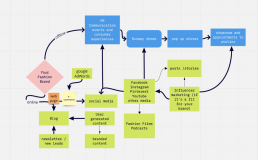
Product experiences: These can be offline and online. It will depend on the most relevant touchpoints, and that you correctly guide the user through the DNA of your brand, with this, you can even get purchases.
Offline: PR events that could include launching a product or having a special experience like a brunch with influencers to introduce a new line of products.
Online: For example, newsletters in order to keep data and leads, but also inform them of new products, collections, and special offers. Create an online activity where they can be part of the brand, maybe a quiz, or a customized game.
Collaboration: You can have a brand ambassador, or do a partnership with other brands. Expand the audience and connect with values related to the brand.
Storytelling: This is an excellent way to engage with your customer. Storytelling is a way to communicate the brand’s DNA through different media. For example, fashion films. When it comes to storytelling, we can talk about the heritage of luxury brands.
Podcast or Playlists: Nowadays living during the pandemic, most people tend to listen to playlists or podcasts online. It’s a good strategy to reach and engage with your audience. Generate conversations with content.
Paid Advertisement on Social Media: You can implement paid advertising on Facebook and Instagram by doing a detailed segmentation of your customer. On Instagram for example you can do posts, reels, lives, stories, there is a lot of branded material to use to engage with your customer.
Content Marketing: This is a great strategy to gain engagement with your customer. Your brand can have organic content for example a blog, or branded content In collaboration or partnership with other media. For example, an article in a magazine mentioning your product.
Pop-up Stores: These are ephemeral temporary spaces. It’s a good strategy, especially when it comes to launching a special edition, collection, or product. You can choose a place where your ideal customer is familiar. For example, Gucci’s Collaboration with North Face, the pop-up store was only available for certain countries.
Customer Experiences: Sephora is one good example. They do not only offer beauty products, but people also get to have special buying treatment experiences according to the customer’s needs.
Trunk Shows: A trunk shop is a space of right curatorship of brands, they are a good way to engage with a special customer or buyer.
Virtual Fashion Shows: Before and during the pandemic the experience of fashion weeks and events have changed their dynamics. The audience and customers are having a different approach to the brand, and become part of a happening and the experience becomes more inclusive to the people and customers.
Influencer Marketing: This is a good strategy for a brand to engage with a customer when the influencer is a great fit. They might become a brand ambassador, or work in a brand collaboration, for example, an influencer collaboration with a jewelry brand, or be part of brand activation. The influencer must be active online or offline. They don’t need to be macro-influencers necessarily, they can be Nano or micro. Nowadays agencies measure their activities. It could be the number of followers, type of content, and engagement with their audience.
These strategies can help you measure, and integrate offline and online channels in order to engage your customer. Finally, they can generate a great impact on the buyer’s journey, providing the customers with new experiences.
Rebeca Ramos
The Style in the Shadows: How Fashion Stylists Create Image Legacies
Dubbed as the secret weapon by photographers and editors, the outstanding skills of a fashion stylist have to do more with culture, and its representation rather than the selection of clothes.
Visual editors or fashion stylists have a unique place in the field of fashion creation and communication. Are they designers? Not really. Certainly not writers either, but they narrate fashion stories through clothes, shapes, textures, colours and the non-mathematical formula of putting it all together and still, making sense.
Multitaskers, imagemakers, personal advisers, editorial-spread creators, clothes curators, are just a few nicknames for the work of a fashion stylist, an ambiguous position and, sometimes, poorly credited for their efforts in the final outcome.
Bourdieu said that the “ordinary choices of everyday existence”, such as furniture, clothing or cooking, reveal our space and role inside society. Cultural Capital Theory states that taste and aesthetic dispositions can signify our differences and, as guessed, are there to be read by an observer.
In this context, fashion stylists are the masters of distinction. A person that constructs and reflects a certain way of life, crafting a visual statement to be captured in an image at their disposal, full of expressions, completely edited. Nothing in the work of a fashion stylist is ordinary, as no image in fashion is purely innocent.
Showcasing a Fashion Story: The Stylist’s Mission
Fashion journalist, Sarah Mower and Art Director, Raul Martinez date the first appearance of the title “stylist” in magazines to the 1930s. However, there is a mix of blurred terms involved, as sometimes, a stylist is indeed a fashion editor or a sittings editor in the context of a photo shoot.
They work hand to hand with the photographer in order to get the picture, an image capable of capturing the essence of that fraction of fashion and time. Stylists are storytellers, with the ability of understanding the language of objects, decoding signs and being the photographer’s side eye.
Polly Allen Mellen, the supreme fashion stylist -the only one who called two mythical photographers by their names: “Dick” for Richard Avedon and “Helmut” for Helmut Newton– is the living proof of an exceptional imagemaker career.
She started in the fifties, but it was really in the sixties when the visual codes of fashion magazines around the world evolved into new ways of capturing reality and fashionable places where her career took off.
She is credited to be, perhaps, the first stylist to take photo shoots out of the studio and into exotic locations and unexpected fashion scenarios like Japan with Veruschka and Avedon himself, with whom she established the most prolific photographic collaborations of her career.
“I follow the camera. If the camera’s moving, I move with it. If the photographer is running, I run behind him. It does not matter what he is doing—I am doing it too” -Polly Mellen in Stylemakers: Inside Fashion.
Her invisible hand, as that of many stylists, lies inside the work of the greatest fashion photographers of all time, like Irving Penn, Guy Bourdin, David Bailey, Deborah Turbeville and afterwards with Herb Ritts, Steven Meisel or Steven Klein.
In this sense, the essential work of the stylist behind the camera is to merge all elements into sequences, to combine fragments of reality with fantasy, to bring objects from the past and present together, to act, in a way, as “bricoleur” reflecting new items of fashion and clothing; a concept borrowed from a Lévi-Strauss’ perspective.
Everything for the Picture: Fashion Styling Duties and Fields of Work
The role of the fashion stylist can be versatile and, as an image professional can branch into different career paths, such as editorial photography, advertising campaigns, film and costume design, performers style advisors, personal image consultant or aesthetic curators.
Anyan and Clarke discuss the creative responsibility of a stylist in an editorial assignment. Authors concluded that it may fluctuate as it is dependent upon the publication, the editorial hierarchy, the photographer, the location, and if the stylist is working in-house or freelance. They define certain aspects a stylist could be expected to:
- Plan the initial creative concept, proving story boards or mood boards as tools to communicate the idea to the team.
- Scout possible locations according to the concept.
- Cast the proper models.
- Source, select and collect all clothing and accessories for the shoot, even its customisation.
- Supervise the set design.
- Supervise or direct hair & makeup design.
As imagemakers, they need to build bridges with different creative perspectives from design to photography. Even if they are all related, a stylist sometimes can be a creative director, and others can act as fashion producers. The styling field is a versatile profession that requires artistic skills whilst not neglecting the commercial reality of the market. Stylists can create an understandable -and attractive- fashion images balancing the two aspects.
Their role leads to the question: In creative images, who should be gaining the credit? Or, in some cases, who is the author? Is it the Photographer? Is it the Stylist? Is it both?
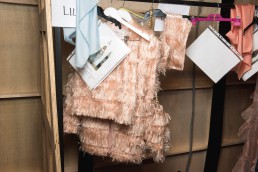
Shaping a Visual Culture Record: The Powerhouse Stylist
There are great examples of outstanding fashion stylists and their contributions to fashion magazines around the world. Now, thanks to the Internet and Social Media, they can grow a fan base according to style, themes, editorial approaches and, in some cases, enjoy celebrity status.
Working on editorial fashion can lead fashion stylists to consult or to collaborate in building a brand aesthetics. Elusive stylist Joe McKenna, for instance, was the hand behind the image of Calvin Klein in the 90s, and the Kate Moss advertising. His rigorous and classic approach on styling influenced the way we normally dress today.
Belgian stylist Olivier Rizzo is another case of bonding with brands, as he is in fact, an in-house stylist for Prada, besides regularly collaborating with photographer Willy Vanderperre to create campaigns for Raf Simons or Jil Sander to name a few.
Katie Grand is a multitasker creative esthete force. Editor and curator, her vision has led her to take part in projects such as the renascence of Louis Vuitton with Marc Jacobs. She collaborated and was the mastermind behind styling the runway shows for 10 years. Spring of 2008 was a memorable moment with the models channeling Richard Prince’s artwork series “Nurses”.
Lady Amanda Harlech, the muse of late Karl Lagerfeld -“his outside pair of eyes” as he referred to her-, is a long-life collaborator with the Maison Chanel, as she consults for the global image of the Couture shows, the Ready-to-Wear presentations and Accessories division. In addition to being a key force in launching John Galliano’s career.
Über-stylist Melanie Ward and iconic designer Helmut Lang’s long creative relationship; Lorie Goldstein, style adviser for photographer Mario Testino and Donatella Versace for her campaigns are solid examples of brand image building.
However, new blood is needed to perpetuate the legacy. Lotta Volkova, the in-house stylist for Vetements and Balenciaga led by Georgian designer Demna Gvasalia, has been a rising star inside the fashion industry and a key element for creating the “oversized awkward look” related to both brands.
Volkova’s style frames come from post-cold war Soviet street culture, delivering “bad taste” combined with alternative punk and hints of fetishism. All of the above, as a proof of great styling can boost a brand to the top.
There are three different areas of action for well-known stylists working in the fashion industry. First, the Editorial Pantheon; second, the Creative Direction Force; third, the Celebrity Stylist.
As for the celebrity arena, things get volatile, as fame and Internet culture can rise or vanish in seconds for every singer, actor or entertainer on the planet.
Now in the middle of Awards Season, celebrity stylists are defying the absence of Red Carpet as a communication tool going fully digital, selecting Social Media as the channels to connect with audiences worldwide.
Zerina Akers is the advisor behind Beyoncé’s Schiaparelli outfit in The Grammys days ago. The stylist selected a Daniel Roseberry creation from the surrealist fashion house. Carlos Nazario is the stylist behind singer Lizzo, besides the U.S representative Alexandria Ocasio-Cortez cover last year. He also styled Lanvin’s latest campaign featuring Paris Hilton.
Law Roach, the stylist behind young actress Zendaya, or Jason Bolden, consulting for Trevor Noah, Jaden Smith and Alicia Keys are good examples of trust in style guidance; as well as Samantha Burkhart, the style hand that helped to shape singers Rosalía and Billie Eilish’s global image respectively.
Whether it is a brand, an editorial or a person, the role of a fashion stylist inside creation of fashion imagery is necessary and, in some cases, crucial in defining the definitive look for an era.
Fernando Aguileta de la Garza
Digital Fashion Designer: 3D Disruption in Fashion and the Design of the Future
3D Fashion and virtual models have improved the design workflow, setting a new standard for fashion design creation, a way faster and more practical approach for the fashion system of tomorrow.
Digital fashion design and 2D-3D creation tools are growing rapidly through fashion companies and designers who are willing to reduce their environmental impact, and to make fashion design a more straightforward process.
Creating digital fashion designs in virtual software platforms is, indeed, the first step of what we call the fashion digitization, and not only creating digital content for fashion presentations in social media with real garments.
The aim of 3D digital clothing development in fashion is to eliminate unnecessary physical sampling and waste generated by pattern cutting or fittings. Shortening production and lead times are some of the benefits of virtual garments, also correcting design inaccuracies on the go.
Moreover, there is a deep changing perspective in how we conceive fashion, and how the fashion industry can serve itself from technology for cleaner business practices. Doing things, the same way every time, cannot lead to different outcomes.
Innovative Techniques and Designers Who Anticipated the Future
The hybrid approach in fashion started more than a decade ago with using rare and innovative techniques such as 3D printing and digital prints, at the time there were also full research in engineering teams for developing intelligent textiles;using technology as a tool for creating unexpected results, testing and analysing all construction possibilities.
The Dutch designer Iris Van Herpen, is well-known for articulating craftsmanship with the latest technology. She was pioneering the field when she founded her namesake brand in 2007 using 3D printing and laser cut technology as the definitive tools for her work. Now she is experimenting with heat bonding and 4D printers as they code movement into material, transforming it. “There’s usually a presumption that the clothes will be difficult to wear, because they don’t always look like the clothes we are familiar with, but that is perception rather than reality”, Van Herpen stated in a New York Times feature.
Van Herpen’s work has been selected by museums like the Metropolitan Museum of Art in New York City, the Musée des Arts Décoratifs in Paris, and the Victoria & Albert Museum in London for her contribution to fashion, as well as for the technical significance of merging the valuable hand treatment of couture with digital experimentation.
Peter Pilotto’s duo, Christopher de Vos and Peter Pilotto, and the Greek designer, resident in London, Mary Katrantzou, started a fever around digitally manipulated print in 2007 and 2008 respectively. Both brands established a new way of fabric treatment and printing, promoting the endless possibilities of Photoshop and Computer Aided Design, and breaking fashion’s traditionalistic construction rules for high-fashion.
Fourteen years later, technological materials with cutting-edge creation software are combined and the result is a game changer for the fashion industry. A new perspective is found for virtual garment production and distribution before creating physical samples, even an entire digital collection just for virtual runway communication purposes.
The Rise of 3D Software: From Digital Clothes and Fabrics to Virtual Models
A new generation of designers is growing worldwide, learning new digital skills, and reinventing the traditional ready-to-wear model, making it faster, eco-friendly, completely accurate and visually stunning, and delivering a real change for the fashion supply chain.
There is a specialized software variety on 3D creation including programs such as CLO3D, Optitex, Marvelous Designer, to name a few. Others are covering digital pattern-making like Gerber Technology or Lectra as a transversal industry design tool for fashion, automotive and furniture.
Currently you can create, modify, alter and edit a fashion garment in 60% less time than with traditional methodology delivering virtual samples in hours, and working collaboratively and remotely. It is also possible to design garments using virtual fabrics, which allows you to adjust lengths and finishes, and doing fittings for virtual avatars, which has led to us to question the whole design process.
Luxury fashion has been experimenting with different digital tools. For example, Louis Vuitton and Final Fantasy collaborated to create digital garments; Balmain has launched a fully virtual showroom last year; Prada now makes a Limited-Edition monthly drop “Time Capsule” featuring a 3D designed pieces to be sold for 24 hours only; Carlings, a Scandinavian brand, has created a virtual collection applied to the shopper’s photographs; and finally, The Fabricant, a Dutch startup creates digital-only clothing, products with very high demand in Second Life and other virtual gaming platforms.
Models and influencers have also been part of this rising 3D movement too. Lil Miquela and Shundu Gram, are CGI (Computer Generated Imagery) models, that is, they do not exist in real life and have been featured in beauty campaigns for brands such as Fenty Beauty and Pat McGrath.
The fashion designer of the future will be dealing with high level hybridizations between the physical world and the digital world, uncovering and developing new ways of transforming the design process. Innovating, to put forward cleaner, and more environmentally-friendly fashion designs.
Fernando Aguileta de la Garza
How to Brand Yourself on Social Media
Want to know how to create a brand based on your personal strengths and skills? Find your voice, identify your value proposition and share it.
For many people it is well known that a brand is not just a logo or a product, it is a way of understanding your business as a whole, from the emotional perspective to all the associations that people build in their minds when they recognize your physical and symbolic elements. A bonding impression of trust, loyalty and value.
Branding, is therefore, creating the relationship and the experience that the client has with the brand, a growing impression developing in the long run. As brands are based on perceptions, one of its main objectives has to be meaningful, it must have a well-defined identity to rely on, a clear vision, a key purpose and surround itself with values, an essential way to connect with audiences.
The meaning of a brand is not defined or reduced exclusively by the tangible side (logo, packaging, advertising), but also by a series of attitudes – attributes, for example a strong personality, and a distinguishable tone of communication. As Marie-Claude Sicard, an expert in branding, puts it: “the identity of a brand is the mixture of both dimensions and their evolution”.
Today, everything can be labeled as a brand, from corporations, countries, and universities to people, as celebrities, politicians, writers or anyone prominent in their field. Personal branding is efficient if, as a person, you are willing to be remarkable and succeed in professional environments, because that could make the difference.
Personal Branding: Skills, Perceptions and Distinction
The concept of “Personal Branding” was coined in 1997 by Tom Peters in the Fast Company Magazine. Several years later, the term has evolved in different ways or acceptions as in “human branding”, “self-marketing” or “self-branding”. One of the main goals of personal branding is to gain relevance in professional paths, in order to do so, some key aspects are required during the effort of becoming a human brand such as visibility, differentiation, and an unique personality to strengthen brand equity.
Scheidt, Gelhard, and Henseler, in their article “Old Practice, but Young Research Field: A Systematic Bibliographic Review of Personal Branding” consider the term, from a process perspective “establishing, maintaining and developing an individual’s human brand…an intangible asset linked to a person, which generates economic and social value through its visibility as a result of a personal branding process”.
There are a variety of human brands examples from sports, academics, visual and performing artists, business managers or self-employed, content creators and professional services.
According to the authors, the personal branding conceptual triangle is based on three pillars. First, the branded individual and his skills, competencies, experiences, and what they bring to the table. Second, the perceptions of the branded person and relevant associations of the target audience. Third, a distinction from their peers, by leveraging their points of difference and defining individual Unique Selling Proposition (USP).
The human brand can have a strong focus on career and employment as well as the commercialization of a story, a way of doing business, an intellectual perspective or knowledge. Thanks to social media, nowadays it is possible to showcase yourself in the digital world, think how you want to be perceived and what is going to draw people’s attention towards you.
How to Create a Brand: From Personal to Social Media and Beyond
1. Focus on your goals: define what you want to archive.
First of all, you have to ask yourself a couple of questions. Do you want to create value for people, how would you do it? Do you want to promote your products or services? Are you willing to step up in your career? If you are focused on goals, it would be easier for you to frame your actual plan and strategize how to get it right, step by step.
For Bianca Miller, the “pack” to define a personal brand are presentation, approach, communication and knowledge. Miller is an entrepreneur, and an expert on personal branding, co-author of “Self-Made: The Definitive Guide to Startup Business Success”.
Personal branding is useful when you have clear objectives, an audit of your personal/professional skills and are thinking of the future. Where do you see yourself when those goals are accomplished? You will need to work on them day by day.
2. Think about your talents, what are you willing to give?
It is important to have an area of expertise or talent. Think about what you are going to share with the world, because that is exactly what you need to nourish. Identify your natural purpose, trace a territory and position yourself on it. You cannot be everything for everybody.
For example, take a look at Amanda Gorman, she is the youngest presidential inauguration wordsmith poet in U.S. history and a good example of a rising personal brand centered in artistic talents, activism, and a clear voice.
She is an award-winning writer and cum laude graduate of Harvard University. An advocate and change-maker author of “Change sings” and the poetry collection “The Hill We Climb”, Gorman also has written for the NYT’s The Edit and contributed to the manifiesto for Nike’s 2020 Black History Month Campaign.
Once you decide where to focus, read, research, analyze, become a master in your field or, if you have that phase covered, think on creative ways to share that knowledge. Focus on useful information, critical thinking, debating or even presenting your own point of view. What are your most important work assets and what will make you different?
3. Select your media and platforms to your personal brand.
Social media has grown tremendously in the past decade, but it is important to select the ones that are right for you. Not all platforms work the same and nor has the same purpose.
If you are a creative working as a stylist, photographer or designer, you will not be showcasing your work through text. You need to adapt the content to each social media channel. Have a blog or a website where you can have full control of your creations and also a personal space to present yourself besides what you offer or what you can do for others.
“Personal branding is the story people tell about you when you are not in the room.” according to Aaron Orendorff VP of Marketing at The CommonThread Collective, Forbes Council Member and previous Editor in Chief of Shopify Plus. An active user on Twitter helping DTC (direct to consumer) brands to grow, providing tips, insights, and point of view about e-commerce.
Audit your social media, review your bio, update your links and introductory phrases. You have to be clear and sound in what you do, and keep it real, it is necessary to build a trust in digital.
4. Know your audience, define your content and be active.
It is important to create a network of people that share the same interest as you. In a way, it is a useful step to position your personal brand in a certain field. Know the main discussions around the topic, how you can contribute to it and how you can interact with the community as a front runner or as the backstage person type.
A good example is Kevin Ma, he founded Hypebeast in 2005 as a sneaker centered passion project, now it is a global reference in street culture and media content with millions of pageviews and an Instagram follower base of 9,6 million, besides @Hypebae, the women’s version with almost 2 million followers including @Hypebaebeauty. Although Ma is not fully active as a personal brand, he acts as a curator, providing a behind the scenes work that nurtures the Hypebeast brand.
Constancy is the key element for valuable content on social media, creating something your audience wants.
5. Craft your story, but be authentic and communicate honestly.
The world is looking for ethical professionals, not fake famous personas. You already have your own personality, you have your own belief system, you just have to put it into context regarding your field.
Sophia Amoruso is a good example of entrepreneurship and hard failure in the public eye. With an exceptional and aspirational story behind her back, she created NastyGal in 2006, an eBay store selling vintage clothes, soon to be NastyGal.com scaling into a multibillion dollar enterprise. She wrote a New York Times Best Seller book about the ride named #GIRLBOSS, turned into a TV series.
Now helping entrepreneurs, side-hustlers and founders-to-be to build their dream with e-books, online courses, and giving advice “ I’ve navigated the tricky waters of building both bootstrapped and investor-backed companies…I’m a total introvert and riddled with impostor syndrome every day–but I get up and keep getting up because I’m driven to share my learnings with the next generation of entrepreneurs”
Personal branding is powerful because it is based on authenticity and human connection. No relationship can be based on lies. Find your communication tone, build trust and tell your professional story from the heart.
To brand yourself, rely on honesty, people will notice.
Fernando Aguileta de la Garza
5 Things You Should Do To Build a Successful Brand
Creating a new brand means strategic thinking, an outstanding product, and a reason to exist. Today we share 5 key steps on brand building.
Creative professionals and business entrepreneurs use branding tools as an essential step to develop an original brand from scratch with a real business strategy in the long term. Some of them, adventure in providing well-thought solutions for the market, or into fixing a client’s needs. Others focus on creativity, developing a real aesthetic difference in their venture with outstanding communication skills.
Here is some advice and useful steps to take when thinking about launching your own personal project.
1. What is your idea? Can we brand it?
Not all ideas are meant to be business ideas, that is the truth. However, this is the first thing you must acknowledge and analyse in detail in order to create and develop a real brand opportunity.
Is it just a fad? Is it really an original idea? Is the market ready? How can this brand idea change and defy the previous business structures? Am I repeating someone else’s success?
You need to face the tough questions, because you should deliver something valuable to the user, either in the form of a solution to problems, a tangible benefit in their daily basis, or as a distinguished product creation by style or an unique material.
For example, Jenna Lyons, former Creative Director of J.Crew created LoveSeen a line of faux lashes for everyday wear, because she observed there was nothing to market in between full glamour and natural products, so she decided to marry the two of them.
With a patented tool, the brand aims to make the application process simpler and cleaner, and Lyons can personally relate to it. She suffers, incontinentia pigmenti, a genetic disorder which affects skin, teeth and causes losing hair (including eyelashes). In this sense, she made her problem, her own business solution.
Creating a business idea is not meant to be solved in a day, you will need to think it through, refine it, observe the market, predict the outcomes. If you believe this idea is worth the risk, then shoot it, but it is time to get serious.
2. Planning is the foundation of your brand strategy, but do not plan forever, you must test it
If the idea is good, the common mistake is immediately put into practice without overlooking and analysing all probable outcomes or needs the venture will require. So do not rush it, but think strategically in order to create MVP (Minimum Viable Product).
A business plan can be extensive and take time, but a lack of sharp planning can be the real headache in real life. You can use management tools to bring together the most important aspects of the brand, such as client, needs, market research, global patterns, technology and innovation.
You can create your own Business Model Canvas, think of the resources, the channels, the revenues and scale business formulas. You could try Design Thinking methodologies, conduct interviews and surveys with the target audience, to name a few steps. Test the product and learn from the information discovered to reshape the model, upgrade the model or change the model completely.
3. Focus: What are you selling? Who else is at the party?
According to Karen Tiber in “The Brand Mapping Strategy”, every executive, startup founder or small business owner needs to define exactly what the brand sells and what the brand does, in a pitch mode, a very focused statement so everybody can understand your brand’s point of view from the start.
Certain degrees of differentiation is a key to stand out competitors. You would have to map the attributes, analise what they do best and worst, to obtain insights. You have to understand what makes you different from them and discover in which territory will you be developing your marketing tactics. This part is essential in creating a brand, as well as following how this market space is performing in order to have profitability.
But what the brand does is intrinsically related to what it is, which leads us to the creative part.
4. Branding purpose: The brand as a whole concept
A brand is a round circle construction, partly intangible, partly physical, both unreplaceable. What the brand is, has to do with identity, what the brand does has to do with action, the actual service or the line development.
Brands with purpose are beyond the product, although if it is well created, the product shall be brand dependent as well as positioning, distribution and the communication strategy. A purpose is aligned with brand values, a unique way of doing things, with a certain personality and a defined brand tone for the expression of that purpose.
For instance, Hungarian fashion brand @Nanushka, created by Sandra Sandor and Peter Baldaszti, defines itself as “the modern bohemian”. A clear and concise statement, it tells us about its way of seeing life, but also the category and even revels in some ways the style of the garments, “the brand draws inspiration from the spiritual journey through cultures and time, effortlessly combining function with flair”.
More than a simple brand claim, they have a purpose “Nanushka delivers a modern, versatile, day to night wardrobe for the modern human with the aim of creating a new informal form of beauty”. The brand has a stand-alone concept flagship in Budapest with also premium stock-lists like Selfridges, Liberty, Browns, NAP and MyTheresa.
5. Have a communication strategy in tune with your brand’s personality and tone
Being innovative in communication formats is the number one goal in order to attract potential customers, but the communication platform has to serve the brand and the purpose. Coherence between the values and all forms of expression are mandatory.
You would need to create a certain energy around your brand, expressed by image or written text with proper tone, a singular syllabus and visual differentiation trademark.
French fashion designer, Marine Serre, has created around her brand a recognizable aesthetic, from its signature half-moon pattern, overlapping garments and upcycling techniques. For her new collection, she created a website called marineserrecore.com, a video interactive campaign site, where, through films, we can discover her creative universe, the collection looks and the brand’s attitude. An original, fresh and simple communication tool for social distancing fashion weeks.
The core of a brand must evolve with time, it needs to be in sync with the social and consumer behaviour changes. However, it must be loyal to its original purpose, having a focus beyond trends and hype, and keeping innovation, flexibility and human communications, as top aspects in a successful brand building.
Fernando Aguileta de la Garza



